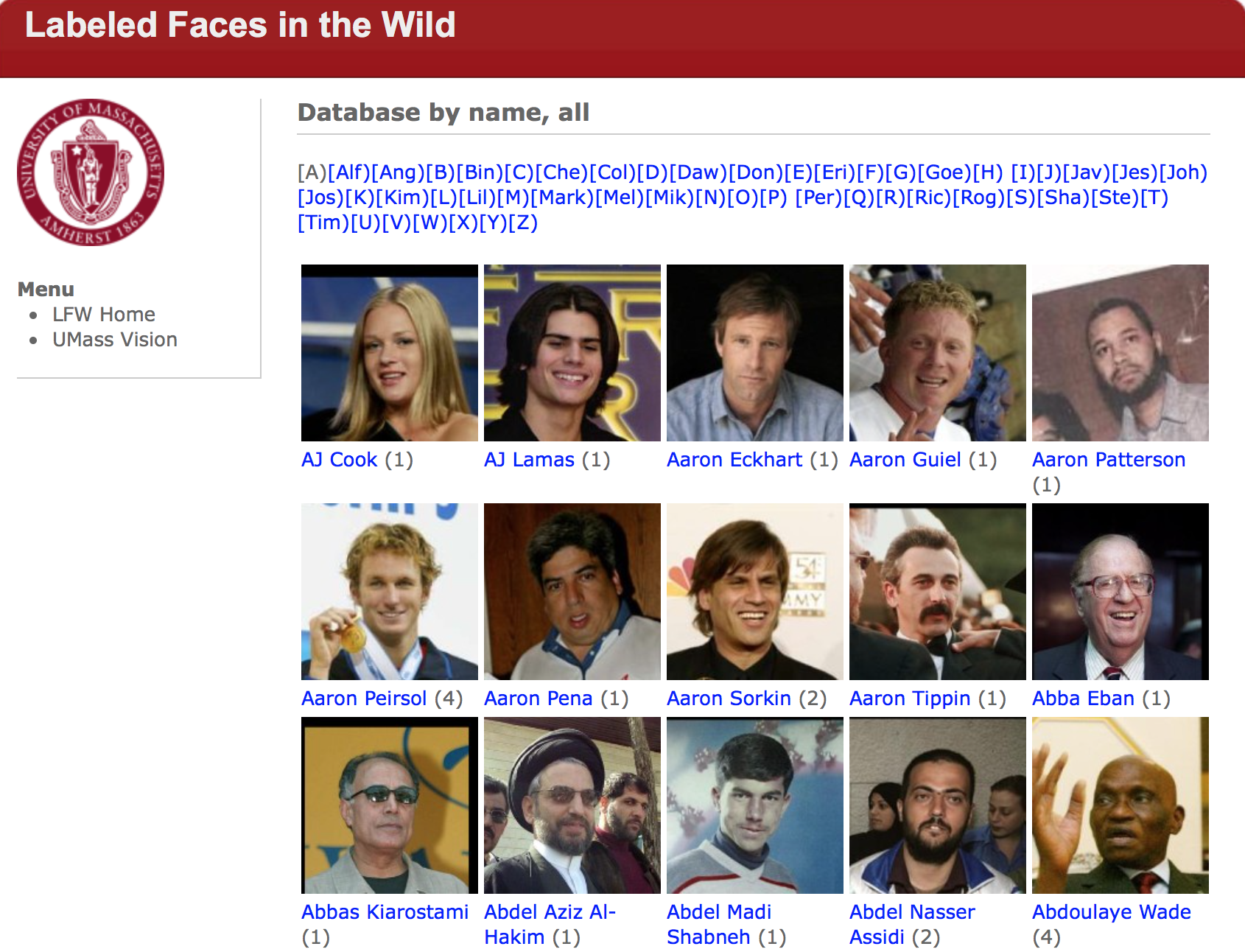Introduction & Background
With power of face recognition, many previous unimaginable tasks become tangible and achievable.
However, cost, in both human force and pecuniary investment, for creating large-scale and pure face dataset is still very high. Only big companies and institutions have enough support to construct such dataset as mentioned above and some are not open-source, which restricts the development for both industry and academic research. As shown in fighure 1, LFW is an commonly accessible face dataset but it only contains 10k+ pictures, in which only 1680 people contain two or more distinct pictures.
 figure 1 snapshot from Labeled Faces in the Wild(LFW) dataset
figure 1 snapshot from Labeled Faces in the Wild(LFW) dataset
Existing Work
Face recognition has been one of the most successful techniques in the field of artificial intelligence because of its surpassing human-level performance in academic experiments and broad application in the industrial world.
Gaussian-face[1] and Facenet[2] hold state-of-the-art record using statistical method and deep-learning method respectively. What’s more, face recognition has been applied in various areas like authority checking and recording, fostering a large number of start-ups like $\text{Face}^{++}$.
References:
[1] F. Schroff, D. Kalenichenko, and J. Philbin, “Facenet: A unified embedding for face recognition and clustering,” in Proceedings of the IEEE Conference on Computer Vision and Pattern Recognition, 2015, pp. 815–823.
[2] C. Lu and X. Tang, “Surpassing human-level face verification performance on lfw with gaus- sianface.” in AAAI, 2015, pp. 3811–3819.